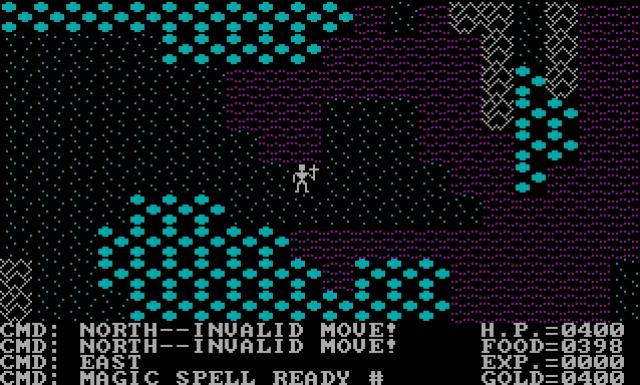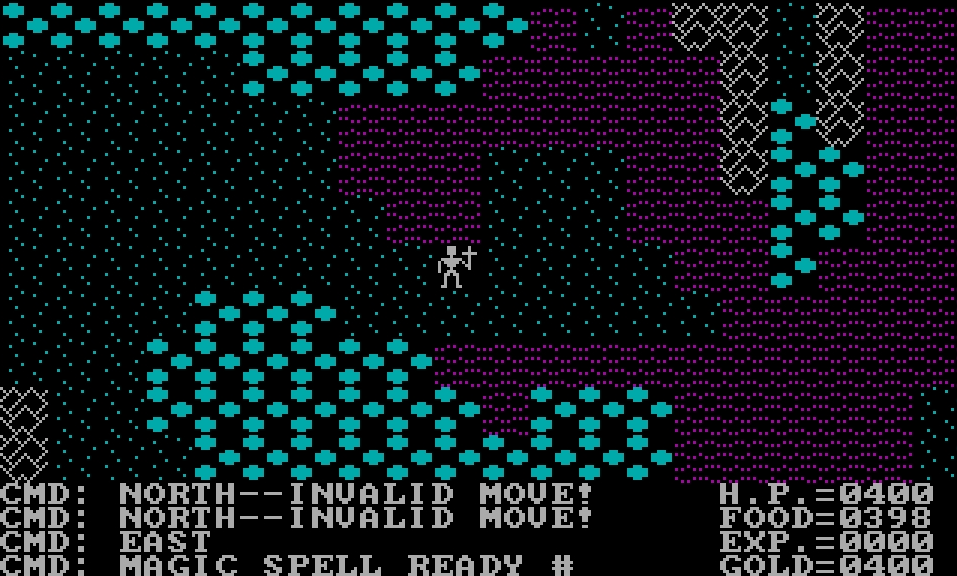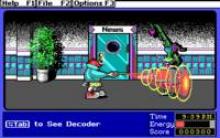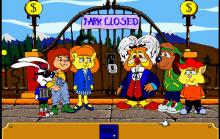Ultima II: The Revenge of the Enchantress
How to play Ultima II: The Revenge of the Enchantress
- Create and customize your character, selecting attributes like strength, dexterity, and intelligence.
- Explore the world by traveling between time periods and planets using time doors and spaceships.
- Engage in turn-based combat with various enemies; plan your attacks and manage your health.
- Gather equipment, gold, and magical items to strengthen your character and unlock new areas.
- Interact with NPCs to gather information, purchase items, and uncover crucial plot points.
Ultima II: The Revenge of the Enchantress Description
"Ultima II: The Revenge of the Enchantress" is a classic role-playing game set in a vast, open-world environment where exploration and strategy are key. Released in 1982, this sequel to the original Ultima expands on its predecessor's groundbreaking design with new features, a more complex storyline, and greater challenges. Players are thrust into a quest to defeat the evil enchantress Minax, who has used time-travel to wreak havoc across various eras, including Earth.
In Ultima II, the player can explore multiple planets and time periods, each with unique environments and dangers. The game offers a mix of dungeon crawling, overworld exploration, and interaction with various characters who provide clues and items necessary to progress. The turn-based combat system, typical of the RPG genre, requires strategic planning and resource management, as players battle monsters and uncover the secrets behind Minax's revenge.
With its top-down perspective, Ultima II immerses players in a richly detailed world, offering one of the earliest examples of an expansive, non-linear RPG experience on platforms like the PC, Apple II, and Commodore 64.
Cheats/Hints/Walkthroughs for Ultima II: The Revenge of the Enchantress

Ultima II: The Revenge of the Enchantress - additional information

Ultima II: The Revenge of the Enchantress - A Deep Dive into a Classic RPG
Introduction to Ultima II: The Revenge of the Enchantress
Released in 1982, Ultima II: The Revenge of the Enchantress is the second installment in the groundbreaking Ultima series, created by Richard Garriott under his pseudonym, Lord British. This game, published by Sierra On-Line, set the stage for what would become one of the most influential RPG franchises in gaming history. Building on the success of the original Ultima game, Ultima II expanded the universe with a more complex storyline, improved gameplay mechanics, and an expansive world that spanned not just different continents, but also different eras.
The Storyline of Ultima II
The plot of Ultima II centers around the evil enchantress Minax, the apprentice of Mondain, the villain from the first Ultima game. After Mondain’s defeat, Minax seeks revenge by manipulating time itself, causing chaos across different periods in Earth’s history. The player, once again assuming the role of the Avatar, must travel through various time zones—including prehistoric times, the Middle Ages, and the distant future—to thwart Minax’s plans and restore order to the timeline.
This time-travel mechanic was innovative for its era, adding depth and complexity to the game’s narrative. Players needed to gather resources, uncover secrets, and solve puzzles across different time periods, making Ultima II a true pioneer in non-linear storytelling in video games.
Gameplay Mechanics and Features
Ultima II: The Revenge of the Enchantress introduced several new gameplay mechanics that distinguished it from its predecessor.
- Expansive World and Time Travel: The game world is massive, with different continents and various time periods that players can explore. Players can travel between these times using time gates or a time machine, which adds a strategic layer to exploration and quest-solving.
- Improved Graphics and Interface: The game featured enhanced graphics for its time, with more detailed sprites and a more user-friendly interface. Although still primitive by today’s standards, these improvements made the game more immersive and accessible.
- Character Progression and Combat: Ultima II continued the series’ focus on character progression, allowing players to level up their characters by gaining experience through combat. The game also expanded on the combat system, offering more variety in terms of enemies and strategies.
- Resource Management: Players needed to carefully manage resources such as food, gold, and health, which added an element of survival to the game. Running out of food could lead to death, and managing resources was crucial to successfully navigating the game’s challenges.
- Quests and NPC Interaction: The game introduced more quests and interactions with NPCs (non-player characters), who provided valuable information, sold items, and offered quests. This added depth to the game’s world and encouraged exploration.
The Cultural Impact of Ultima II
Ultima II was a commercial success and solidified the Ultima series’ reputation as a leader in the RPG genre. Its innovations in storytelling, world-building, and gameplay mechanics influenced countless RPGs that followed. The game’s non-linear approach, where players could choose how to progress through the game’s world, was particularly revolutionary and set a new standard for player agency in video games.
Moreover, the game’s use of time travel was one of the first in the gaming world, opening up possibilities for future games to explore similar concepts. This aspect of Ultima II is often cited as one of the reasons why the game remains a classic, as it challenged players to think beyond the typical boundaries of RPG gameplay.
Similar Games and Influence on the Genre
For those who enjoyed Ultima II: The Revenge of the Enchantress, several other games offer a similar experience, either by expanding on the RPG elements or by exploring time-travel mechanics.
- Ultima III: Exodus – The next installment in the series, Ultima III took the foundations laid by its predecessor and refined them, introducing party-based combat and a more complex storyline.
- The Bard’s Tale – Released in 1985, this game is another early RPG that emphasized exploration, character progression, and combat. It’s known for its challenging dungeons and immersive world.
- Might and Magic: Book One – The Secret of the Inner Sanctum – Released in 1986, this game combined elements of fantasy and science fiction, similar to the Ultima series, and offered a vast world to explore with intricate quests.
- Wasteland – While more of a post-apocalyptic RPG, Wasteland (released in 1988) shared Ultima II's open-world exploration and resource management mechanics, offering players a deep, non-linear gameplay experience.
Legacy of Ultima II: The Revenge of the Enchantress
Ultima II: The Revenge of the Enchantress is more than just a sequel; it is a cornerstone in the history of role-playing games. Its introduction of time travel, expansive world-building, and non-linear gameplay continues to resonate with gamers and developers alike. The game’s influence is still felt today in modern RPGs that strive to offer players rich worlds filled with choice and consequence.
For those looking to experience the roots of the RPG genre, revisiting Ultima II offers a glimpse into the early days of gaming, where innovation was key, and every game was a step into uncharted territory. Whether you’re a veteran gamer or new to the series, Ultima II remains a must-play classic that showcases the enduring appeal of the Ultima series and the genius of Richard Garriott’s vision.
















Write a comment